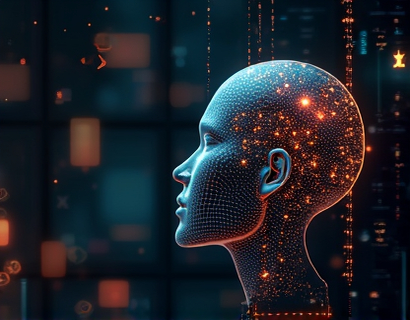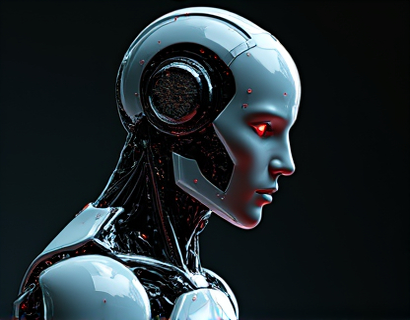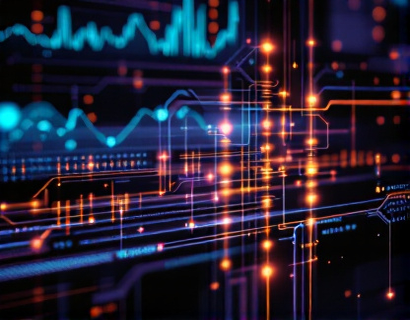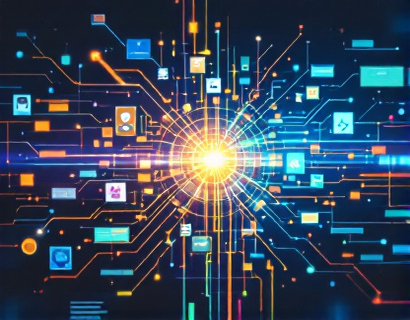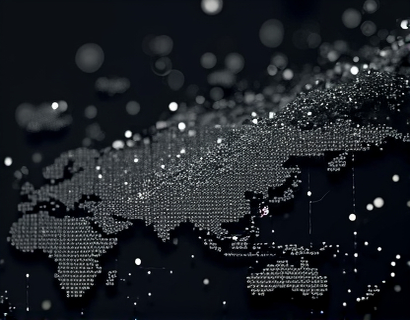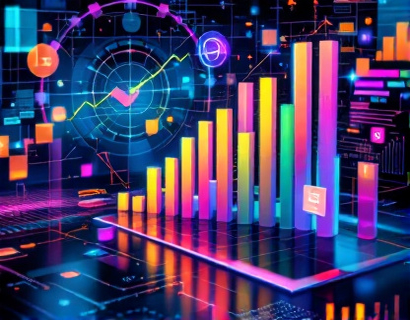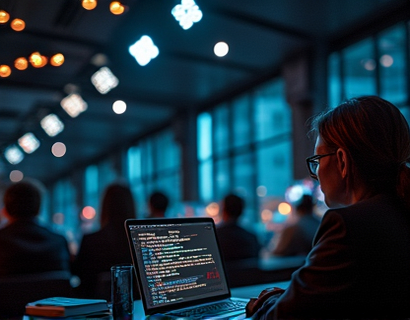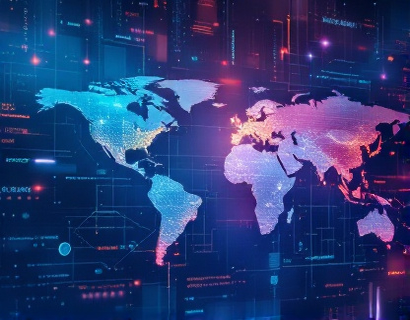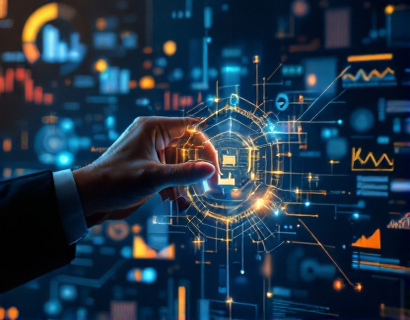Revolutionizing Productivity in the Digital Age: The Power of Crypto and AI
The intersection of cryptocurrency and artificial intelligence (AI) is giving rise to a new era of digital solutions that promise to revolutionize productivity. For tech enthusiasts and digital visionaries, the potential of combining these two cutting-edge technologies is immense. This article delves into the innovative applications that are streamlining tasks and enhancing efficiency, offering a glimpse into the future of work.
The integration of blockchain technology with AI is creating a synergy that is transforming various industries. Blockchain's inherent transparency, security, and decentralization, when combined with AI's ability to process vast amounts of data and learn from it, results in solutions that are not only more efficient but also more secure. This powerful combination is particularly beneficial for tech leaders and early adopters who are always on the lookout for ways to stay ahead.
Enhanced Data Management and Security
One of the primary ways crypto and AI are maximizing productivity is through enhanced data management and security. Blockchain provides a decentralized and immutable ledger, ensuring that data is tamper-proof and transparent. AI algorithms can then analyze this data with unprecedented accuracy, identifying patterns and insights that would be impossible for humans to discern on their own. This synergy is particularly valuable in industries such as finance, healthcare, and supply chain management, where data integrity and security are paramount.
For instance, in the financial sector, AI-driven analytics on a blockchain-based platform can detect fraudulent transactions in real-time, reducing the risk of financial losses. Similarly, in healthcare, patient data stored on a blockchain can be securely accessed and analyzed by AI systems to improve diagnostic accuracy and treatment plans. The combination of these technologies ensures that data is not only secure but also highly accessible and usable, significantly boosting productivity.
Automated Processes and Smart Contracts
Another significant area where crypto and AI are making a difference is in the automation of processes through smart contracts. Smart contracts are self-executing contracts with the terms of the agreement directly written into code. When combined with AI, these contracts can not only execute tasks automatically but also adapt to changing conditions and learn from past executions.
In business operations, smart contracts can streamline workflows by automating routine tasks such as invoicing, payment processing, and contract management. AI can optimize these processes by predicting potential issues and suggesting improvements. For example, an AI system can analyze historical data to identify patterns in payment delays and adjust smart contract parameters to minimize future delays. This level of automation and optimization is a game-changer for businesses looking to enhance their operational efficiency.
Intelligent Resource Allocation
The synergy of crypto and AI also extends to intelligent resource allocation. AI algorithms can analyze vast amounts of data to predict resource needs and optimize the allocation of computational power, storage, and other resources. In the context of blockchain, this means that network resources can be used more efficiently, reducing waste and lowering costs.
For instance, in cloud computing, AI can dynamically allocate computing resources based on real-time demand, ensuring that resources are used where they are most needed. This is particularly beneficial for applications that require significant computational power, such as machine learning models. By leveraging blockchain for secure and transparent resource trading, organizations can further enhance their resource management, leading to greater productivity and cost savings.
Decentralized AI Platforms
Decentralized AI platforms are another exciting development at the intersection of crypto and AI. These platforms allow AI models to be trained and deployed in a decentralized manner, leveraging the computational power of a distributed network. This approach not only enhances the scalability and robustness of AI systems but also ensures that data remains private and secure.
Users can contribute their computational resources to the network and earn cryptocurrency rewards for their participation. This incentivizes more individuals and organizations to contribute to the network, creating a virtuous cycle of growth and innovation. Decentralized AI platforms also reduce the risk of data breaches and central points of failure, as the system is inherently more resilient due to its distributed nature. This level of decentralization and security is crucial for maintaining trust and ensuring the continued adoption of AI technologies.
Enhanced User Experiences through Personalization
AI-driven personalization is another area where the combination of crypto and AI is making a significant impact. By analyzing user behavior and preferences, AI can provide highly personalized experiences across various applications and services. This personalization can range from tailored content recommendations to customized user interfaces and interactive experiences.
In the context of blockchain, user data can be managed in a way that respects privacy and gives users more control over their information. Cryptocurrency can be used as a medium of exchange for accessing personalized services, creating a seamless and secure user experience. For example, a user could earn tokens by engaging with a platform and use those tokens to unlock premium features or content. This not only enhances user satisfaction but also fosters a more engaged and loyal user base.
Supply Chain Optimization
Supply chain management is another critical area where the integration of crypto and AI is driving productivity gains. AI can optimize various aspects of the supply chain, from demand forecasting to inventory management and logistics. Blockchain ensures that all transactions and movements are recorded transparently and securely, reducing the risk of errors and fraud.
For instance, AI can predict demand for products based on historical data, market trends, and other factors, allowing companies to adjust their production and inventory levels accordingly. Blockchain can then be used to track the movement of goods from manufacturers to retailers, ensuring that each step is recorded and verified. This level of transparency and efficiency not only reduces costs but also improves the overall reliability of the supply chain.
Challenges and Considerations
While the potential of crypto and AI is vast, there are several challenges and considerations that must be addressed. One of the primary concerns is the regulatory landscape. As these technologies continue to evolve, governments and regulatory bodies are still grappling with how to govern them effectively. Ensuring compliance while fostering innovation is a delicate balance that requires ongoing dialogue and collaboration.
Another challenge is the technical complexity involved in integrating blockchain and AI systems. Developers need to have a deep understanding of both technologies to create robust and efficient solutions. Additionally, the energy consumption associated with blockchain, particularly proof-of-work systems, is a significant environmental concern that needs to be addressed through the adoption of more sustainable consensus mechanisms.
Future Prospects
Looking ahead, the future of crypto and AI is bright, with numerous opportunities for further innovation and growth. As the technologies mature, we can expect to see even more sophisticated applications that push the boundaries of what is possible. The convergence of these technologies will continue to drive productivity gains, create new business models, and transform industries in ways we are only beginning to imagine.
For tech enthusiasts and digital visionaries, the intersection of crypto and AI represents a frontier of endless possibilities. By embracing these technologies and staying at the forefront of innovation, individuals and organizations can position themselves to thrive in the digital age. The journey ahead is exciting, and the potential for transformation is limitless.





